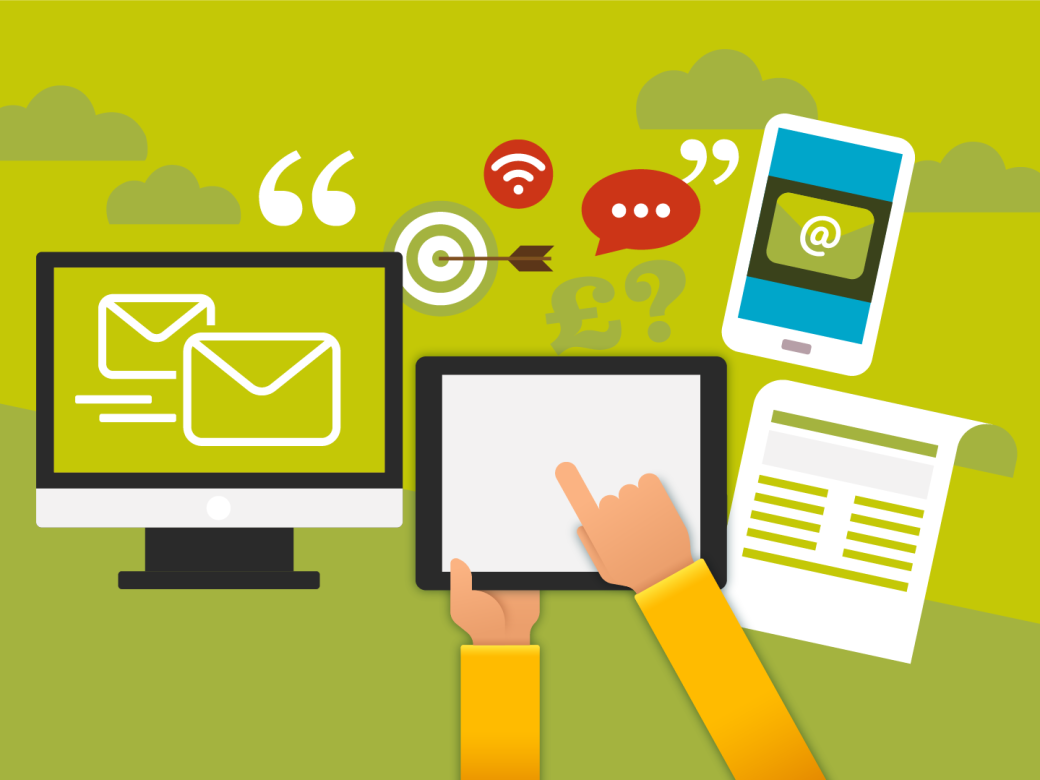Owned, earned or paid? Content marketing in plain words
16 July, 2018 Reading: 6:00 mins
I remember searching “content marketing” several years ago feeling rather exposed, because I didn’t actually understand what it was. As it turned out, I realised it was simply a new name for something we had always been doing but needed to do more and more of.

I remember searching “content marketing” several years ago feeling rather exposed, because I didn’t actually understand what it was. As it turned out, I realised it was simply a new name for something we had always been doing but needed to do more and more of. As marketers we have always been about developing content, it’s just that the platforms which we can disseminate this content through have evolved and grown, become more immediate and easier to manage. And we need to feed these channels.
It occurred to me recently, however, that sometimes the meaning of content and its value is not 100 per cent clear to our clients. So I thought it was worth sharing my thoughts. What is it, how does it work, and how should marketers think about it?
Three types of media
At KISS we call them “owned”, “earned’ and “paid”. Your “owned” media is 100 per cent controlled and instigated by you – you decide what to say, when and where: websites, newsletters and outbound email, and what you post on social media. We call media relations (or PR), blogger and influencer relations “earned” media. You don’t have control over what they say about you: you control the outbound messages – and when they say something positive it’s hugely useful and has an air of third-party endorsement. And “paid” media is what you would expect: advertising in all forms including AdWords and sponsored posts. Content marketing matters partly because it’s so relevant to all three.
Give first
In content marketing we aim to serve, to give a little something first. As part of a marketing plan we develop themes for these conversations, and as you do it’s important to ask: how can we make our prospects’ day a bit better? Their job a bit easier? The common theme here is content – having something to say that genuinely informs, interests them or helps them out (even if that’s just by banishing boredom or making them laugh).
What is ‘content’?
At the more dense end of the content spectrum are white papers, reports, webinars, podcasts and tutorials. These must be done well, so they take a bit of resource (often outsourced) – but they are great tools for showcasing your sector knowledge, sharing an opinion, and giving you an enduring “property” you can use in lots of places – and sometimes even sell. Often the same basic insights or research (or that keynote presentation you did last month) can be reused for these across several channels.
Mid-size content might be blogs, tutorial or “insight” discussion videos, quality customer case studies, newsletters and email newsletters. Again the secret is re-using research and insights (for those who didn’t read the white paper), reminding people of your website and that upcoming webinar. Reports, blogs and webinars can be re-edited or combined, and mid-size things like customer case studies are useful here, not just at trade shows or on your website. (According to DemandGen 78 per cent of buyers look at case studies before making a purchase).
At the quicker end, infographics are powerful and have a habit of being picked up by others – there are free template packages out there like canva.com. Also quick to do once you have the systems in place are email updates, short blogs, press releases or LinkedIn posts. Other social media channels such as Instagram and Twitter are vital to send people to the more dense and larger content sitting behind.
The same rule remains true though: don’t just tell me about your product, give me content and links that inform me, perhaps make my day job a little easier or make me feel good about you (have a look at @persiluk and #OutdoorClassroomDay.) This may seem obvious, but in a world where more than 90 per cent of B2B marketers and 86 per cent of B2C marketers say they are using content marketing, I still come across some very large players with big marketing departments (like @FIAT_UK) whose content still seems to largely be communicating features and benefits.
Images matter more
Now more than ever strong images, photos and video are vital to grab the eye and keep people’s attention. Research show time and again that people find video engaging and time-efficient.
Some things are changing
Of course the ever-smarter phone in our pocket is a massive driver – the first place many of us go to find anything, at any time – so it’s driving changes in our habits. It’s partly because our phones and their networks have got faster at streaming video that YouTube video views hit five billion a day by December 2017 – one billion of them on mobile – and time spent watching is up around 60 per cent year-on-year.
We expect mobile-friendly video and websites. We expect easily shareable content: gifs, video and graphics. We’re all on our phones to work, catch up on news and to gossip – basically to join a conversation on a rising number of channels. So your customers are more in “conversation mode” than ever before when they see your messages, and good content marketing gets you noticed by contributing to that conversation with something appealing and shareable, expecting a response. In its ‘Think Forward’ report, industry guru We Are Social recommends thinking “participant, not consumer”, and “rewarding loyalty with responsibility”.
Some things are the same
A phone-optimised website is still the hub here – content marketing’s job is largely to offer something mutually beneficial, reminding busy people that you’re out there. The next step – the “call to action” – might be to message the writer, but it’s mostly a clickthrough to your website. However people find your company, the website’s your shopfront – it’s where you send prospects from other channels to move them down your sales funnel, it’s your repository of most of your product facts and benefits.
Substance over sizzle
I get a plain html email once a month. It doesn’t have an especially catchy title – but it includes the letters HBR. I skim Harvard Business Review’s mail every month without fail and I always learn something. If you reliably give me something that’s informative and useful – even in a relatively old and more one-way mode like this – you’ve earned my loyalty. On the other hand there are so many places I can look that if you to get my attention – and more importantly my time – without giving, without the encounter somehow being of value to me too; if you waste my time with content that doesn’t speak to my needs, or you’re in “sell” mode when I’m not expecting it, you’ve probably lost me forever.
